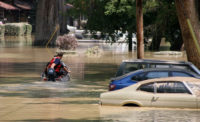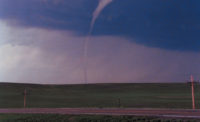Study says Extreme Weather Events Hitting North America the Hardest

A new study by Munich Re shows that North America has been most affected by weather-related extreme events in recent decades. The publication “Severe Weather in North America” analyzes weather perils and their trends. It reports and shows that the continent has experienced the largest increases in weather-related loss events.
For 1980 to 2011 the overall loss burden from weather catastrophes was $1,060 billion (in 2011 values), the report says.The insured losses amounted to $510 billion, and some 30,000 people lost their lives due to weather catastrophes in North America during this time frame. With $62.2 billion insured losses and overall losses of $125 billion (in original values) Hurricane Katrina in 2005 was the costliest event ever recorded in the US. Katrina was also the deadliest single storm event, claiming 1,322 lives.
The study shows a nearly quintupled number of weather-related loss events in North America for the past three decades, compared with an increase factor of 4 in Asia, 2.5 in Africa, 2 in Europe and 1.5 in South America. Anthropogenic climate change is believed to contribute to this trend, though it influences various perils in different ways.
Storms
Storms account for 76 percent of overall losses ($805 billion since 1980) and for 89 percent of insured losses ($454 billion), the report says.
Thunderstorms
Thunderstorms are the most important severe weather hazard for the insurance industry in the US. Between 1980 and 2011, 43 percent of insured property windstorm losses ($180 billion) were caused by severe thunderstorms, the report says.
Heat-waves and droughts
Other events like heat-waves, droughts and wildfires contributed 15 percent ($160 billion) to the overall losses from severe weather events, with droughts accounting for more than half, the report says.
Looking for a reprint of this article?
From high-res PDFs to custom plaques, order your copy today!








